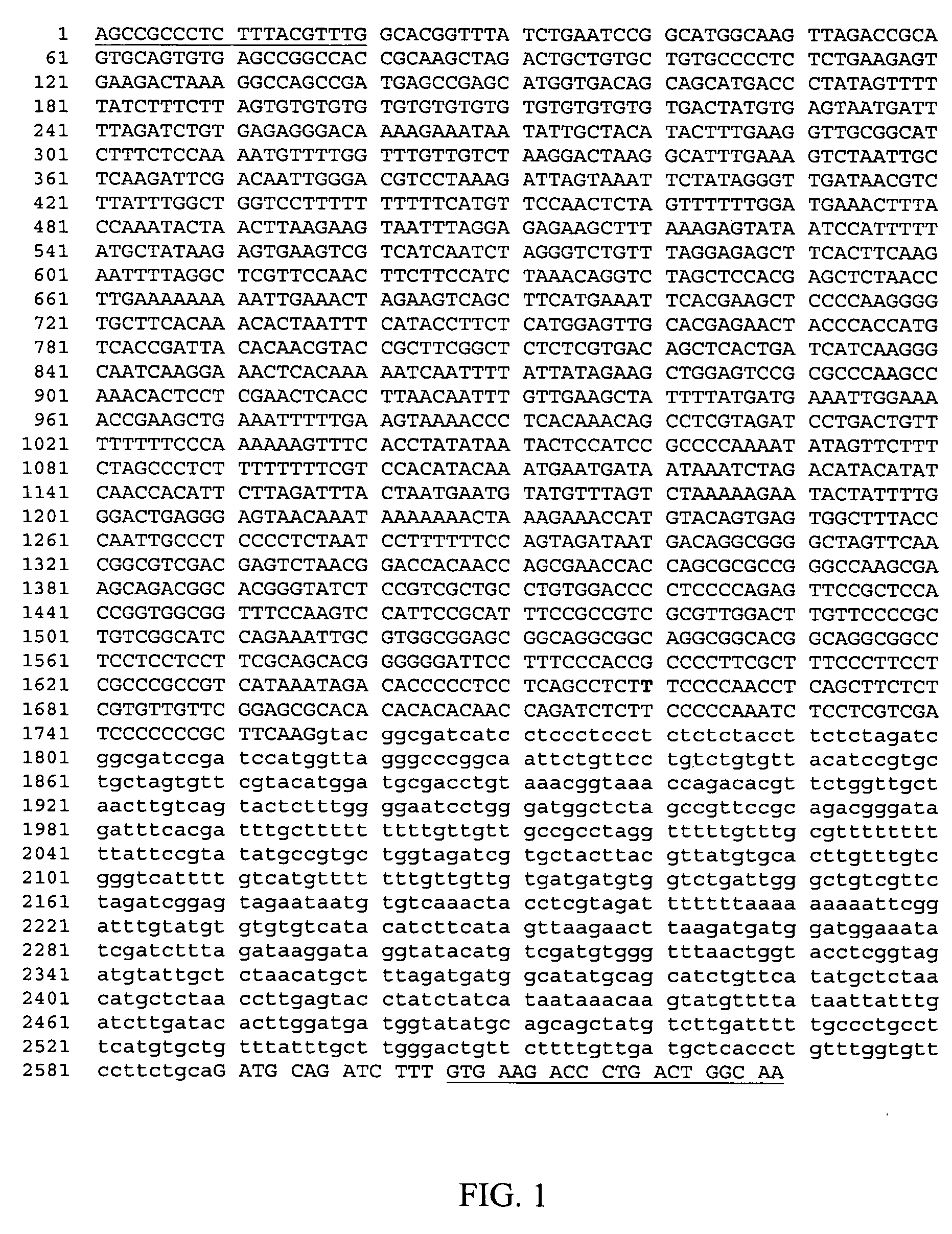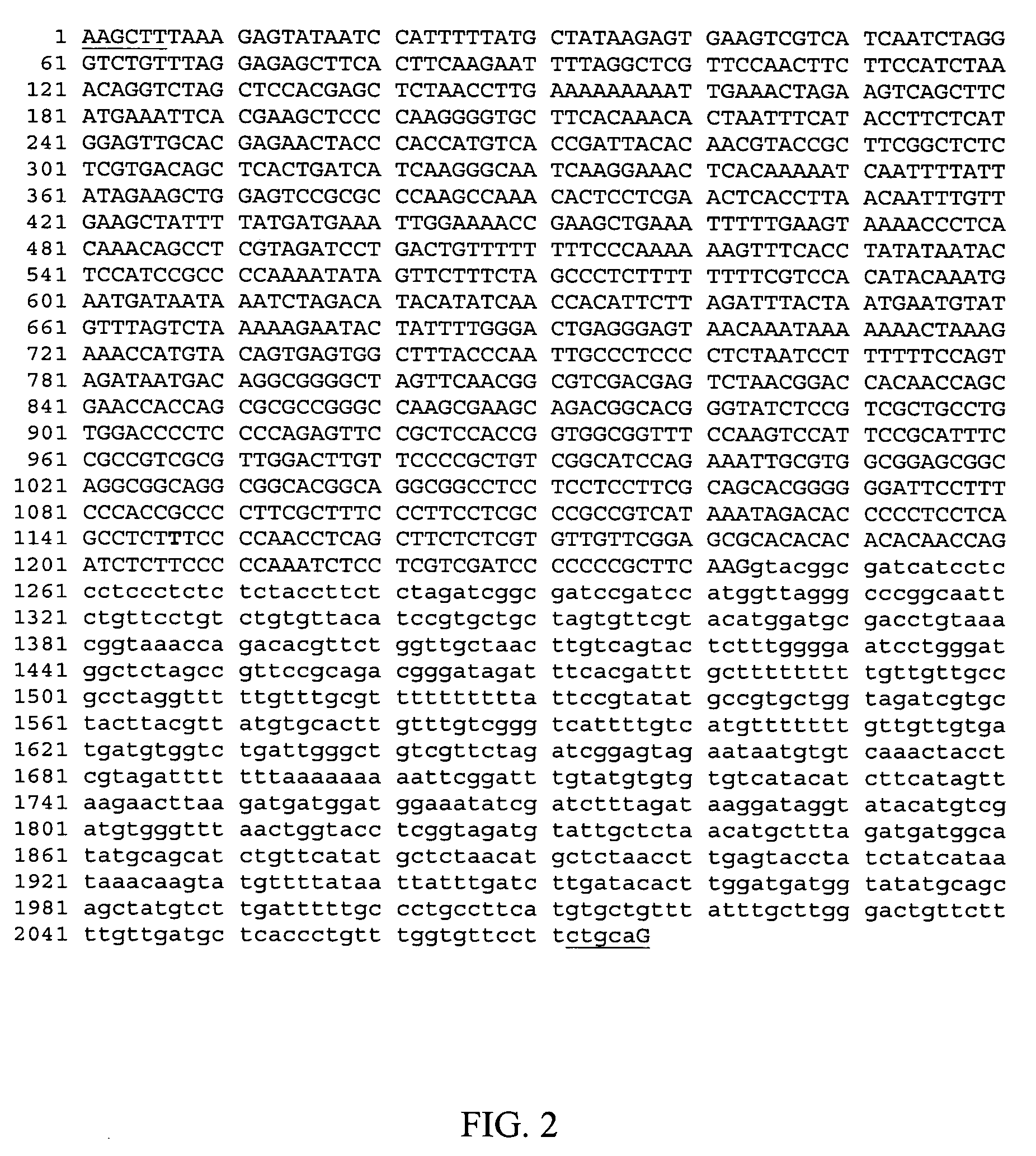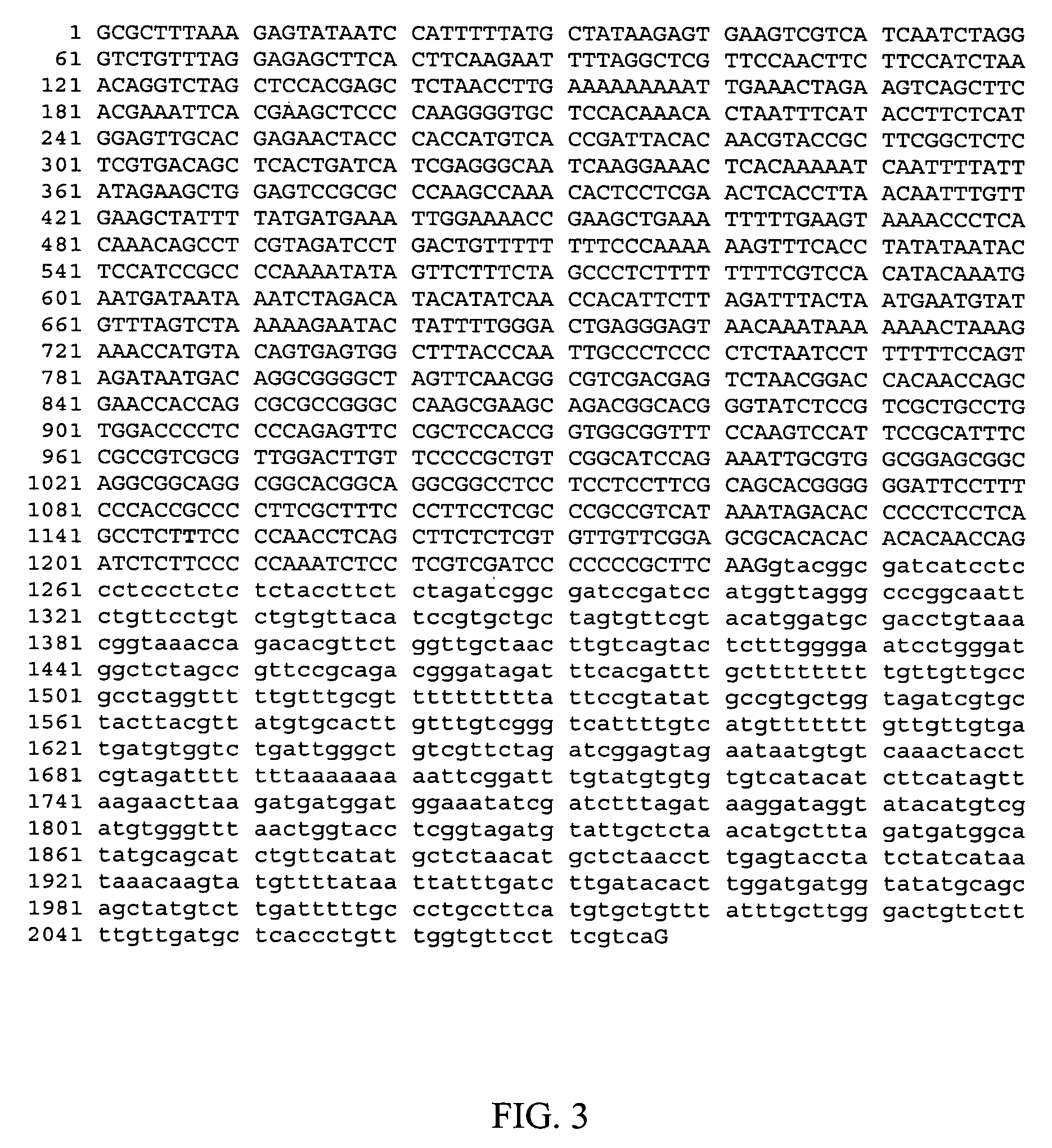Cis-acting regulatory elements from tripsacum dactyloides
a technology of regulatory elements and tripsacum dactyloides, which is applied in the field of plant molecular biology, can solve the problems of reducing the usefulness of such elements and genetic instability, and achieve the effect of modifying the plant phenotyp
- Summary
- Abstract
- Description
- Claims
- Application Information
AI Technical Summary
Benefits of technology
Problems solved by technology
Method used
Image
Examples
example 1
Isolation of Cis-Acting Elements
[0083]Tripsacum dactyloides plants were obtained from a commercial nursery and genomic DNA was extracted using methods well known in the art. PCR primers were designed to amplify the promoter region of a polyubiquitin gene using published sequences of maize genes (GENBANK® Accession No. U29159).
[0084] PCR was performed with the primers described above and Tripsacum dactyloides genomic DNA as the template. The resulting PCR products amplified from Tripsacum DNA were approximately the same size as fragments that would be amplified from maize DNA. This finding was unexpected since promoter regions as a rule are not highly conserved among species. Database comparisons and alignments demonstrated that the fragments were homologous to monocot polyubiquitin promoters. One fragment, contained in the plasmid pAX306, was chosen for further characterization. This fragment contains 32 base pairs of polyubiquitin coding region and approximately 2 kb of the 5′ fl...
example 2
Construction of Vectors Using the TripPro5 Promoter
[0087] The 2077 bp HindIII to PstI restriction fragment containing TripPro5 was ligated into the plasmid vector pBluescriptII (Stratagene, La Jolla, Calif.). The PINII terminator (An et al. (1989) Plant Cell 1:115-122) was amplified from potato genomic DNA by PCR and ligated 3′ to the TripPro5 fragment using methods well known in the art. The resulting plasmid was named pAX215 and contains a plant gene expression cassette comprising the TripPro5 promoter and PinII terminator.
example 3
Expression of the Luciferase Reporter Gene
[0088] The luc+ gene encoding the reporter enzyme luciferase was amplified from the plasmid pGL3 basic (Promega Corp, Madison, Wis.) by PCR. Restriction sites were modified during PCR by methods well known in the art and the fragment was sequenced to ensure against PCR-induced errors. The luc+ reporter fragment was ligated between the TripPro5 promoter and PinII terminator to produce the plasmid pAX436. A similar plasmid, pAX418, was constructed using the rice actin promoter from pCOR113 (McElroy et al. (1991) Mol. Gen. Genet. 231:150-160), the luc+ gene, and the PinII terminator.
[0089] The plasmids pAX418 and pAX436 were transformed into immature maize embryos via aerosol beam injection as described in US Patent Application No. 20040219676 (PCT Publication No. WO 01 / 38514). Embryos were homogenized in GLO lysis buffer (Promega Corp.) 3, 7, or 14 days after transformation. Luciferase activity was analyzed using the Promega STEADY-GLO® Luci...
PUM
| Property | Measurement | Unit |
|---|---|---|
| temperature | aaaaa | aaaaa |
| temperature | aaaaa | aaaaa |
| pH | aaaaa | aaaaa |
Abstract
Description
Claims
Application Information
 Login to View More
Login to View More - R&D
- Intellectual Property
- Life Sciences
- Materials
- Tech Scout
- Unparalleled Data Quality
- Higher Quality Content
- 60% Fewer Hallucinations
Browse by: Latest US Patents, China's latest patents, Technical Efficacy Thesaurus, Application Domain, Technology Topic, Popular Technical Reports.
© 2025 PatSnap. All rights reserved.Legal|Privacy policy|Modern Slavery Act Transparency Statement|Sitemap|About US| Contact US: help@patsnap.com



